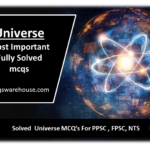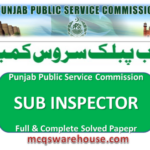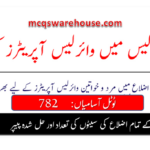top 100 keyboard shortcuts
Key board Shortcuts
top 100 keyboard shortcuts
Important Keyboard Shortcuts for all exams
Keyboard Shortcuts (Microsoft Windows)
1.CTRL +C (Copy)
2. CTRL + X (Cut)
3. CTRL + V (Paste)
4. CTRL + Z (Undo)
5.DELETE (Delete)
6. SHIFT + DELETE (Delete the selected item permanently without placing the item in the Recycle Bin)
7. CTRL while dragging an item (Copy the selected item)
8. CTRL + SHIFT while dragging an item (Create a shortcut to the selected item)
9. F2 key (Rename the selected item)
10. CTRL + RIGHT ARROW (Move the insertion point to the beginning of the next word)
11. CTRL + LEFT ARROW (Move the insertion point to the beginning of the previous word)
12. CTRL + DOWN ARROW (Move the insertion point to the beginning of the next paragraph)
13. CTRL + UP ARROW (Move the insertion point to the beginning of the previous paragraph)
14. CTRL + SHIFT with any of the arrow keys (Highlight a block of text) SHIFT with any of the arrow keys (Select more than one item in a window or on the desktop, or select text in a document)
15. CTRL + A (Select all)
16. F3 key (Search for a file or a folder)
17. ALT + ENTER (View the properties for the selected item)
18. ALT+F4 (Change the active item, or quit the active program)
19. ALT + ENTER (Display the properties of the selected object)
20. ALT + SPACEBAR (Open the shortcut menu for the active window)
21. CTRL + F4 (Close the active document in programs that enable you to have multiple documents open simultaneously)
22. ALT + TAB (Switch between the open items)
23. ALT + ESC (Cycle through items in the order that they had been opened)
24. F6 key (Cycle through the screen elements in a window or on the desktop)
25. F4 key (Display the Address bar list in My Computer or Windows Explorer)
26. SHIFT + F10 (Display the shortcut menu for the selected item)
27. ALT + SPACEBAR (Display the System menu for the active window)
28. CTRL + ESC (Display the Start menu)
29. ALT + Underlined letter in a menu name (Display the corresponding menu) Underlined letter in a command name on an open menu (Perform the corresponding command)
30. F10 key (Activate the menu bar in the active program)
31. RIGHT ARROW (Open the next menu to the right, or open a submenu)
32. LEFT ARROW (Open the next menu to the left, or close a submenu)
33. F5 key (Update the active window)
34. BACKSPACE (View the folder one level up in My Computer or Windows Explorer)
35.ESC (Cancel the current task)
36. SHIFT when you insert a CD-ROM into the CD-ROM drive (Prevent the CD-ROM from automatically playing)
Dialog Box – Keyboard Shortcuts
1. CTRL + TAB (Move forward through the tabs)
2. CTRL + SHIFT + TAB (Move backward through the tabs)
3. TAB (Move forward through the options)
4. SHIFT + TAB (Move backward through the options)
5. ALT + Underlined letter (Perform the corresponding command or select the
corresponding option)
6. +ENTER (Perform the command for the active option or button)
7. SPACEBAR (Select or clear the check box if the active option is a check box)
8. Arrow keys (Select a button if the active option is a group of option buttons)
9. F1 key (Display Help)
10. F4 key (Display the items in the active list)
11. BACKSPACE (Open a folder one level up if a folder is selected in the Save As or Open dialog box)
Microsoft Natural Keyboard Shortcuts
1. Windows Logo (Display or hide the Start menu)
2. Windows Logo + BREAK (Display the System Properties dialog box)
3. Windows Logo + D (Display the desktop)
4. Windows Logo + M (Minimize all of the windows)
5. Windows Logo + SHIFT + M (Restore the minimized windows)
6.Windows Logo + E (Open My Computer)
7. Windows Logo + F(Search for a file or a folder)
8. CTRL + Windows Logo + F (Search for computers)
9. Windows Logo + Fi (Display Windows Help)
10. Windows Logo + L (Lock the keyboard)
11. Windows Logo + R (Open the Run dialog box)
12. Windows Logo + U (Open Utility Manager)
13. Accessibility Keyboard Shortcuts
14. Right SHIFT for eight seconds (Switch Filter Keys either on or off)
15. Left ALT + left SHIFT + PRINT SCREEN (Switch High Contrast either on or off)
16. Left ALT + left SHIFT + NUM LOCK (Switch the MouseKeys either on or off)
17. SHIFT five times (Switch the Sticky Keys either on or off)
18. NUM LOCK for five seconds (Switch the Toggle keys either on or off)
19. Windows Logo + U (Open Utility Manager)
20. Windows Explorer Keyboard Shortcuts
21. END (Display the bottom of the active window)
22. HOME (Display the top of the active window)
23. NUM LOCK+ Asterisk sign () (Display all of the subfolders that are under the selected folder)
24. NUM LOCK + Plus sign ( + ) (Display the contents of the selected folder)
MMC Console keyboard shortcuts
1. SHIFT + F10 (Display the Action shortcut menu for the selected item)
2. F1 key (Open the Help topic, if any, for the selected item)
3. F5 key (Update the content of all console windows)
4.CTRL + F 10 (Maximize the active console window)
5. CTRL + F5 (Restore the active console window)
6. ALT + ENTER (Display the Properties dialog box, if any, for the selected item)
♦ For More Important Computer Related MCQ’s For All Exams Visit Computer Section ♦





